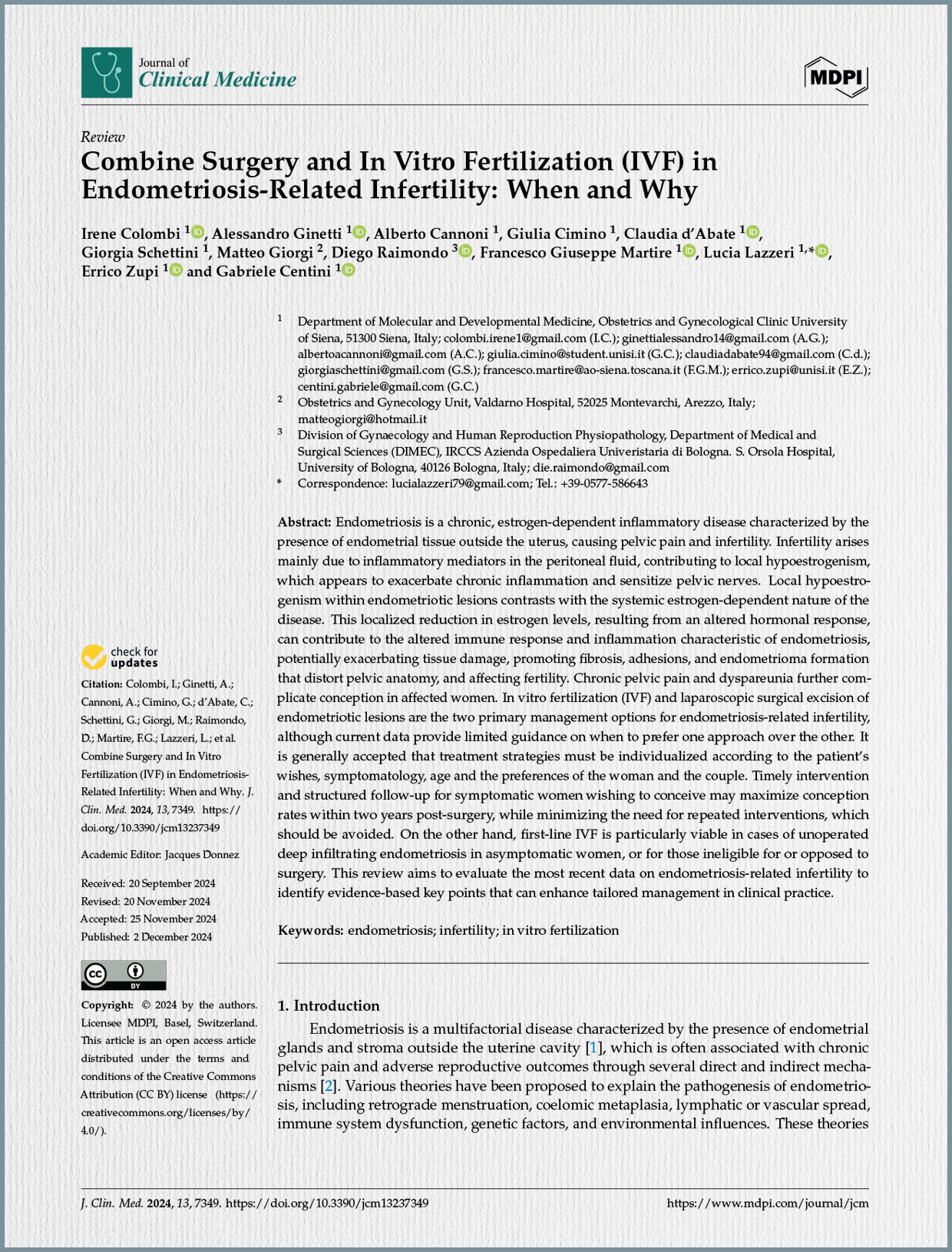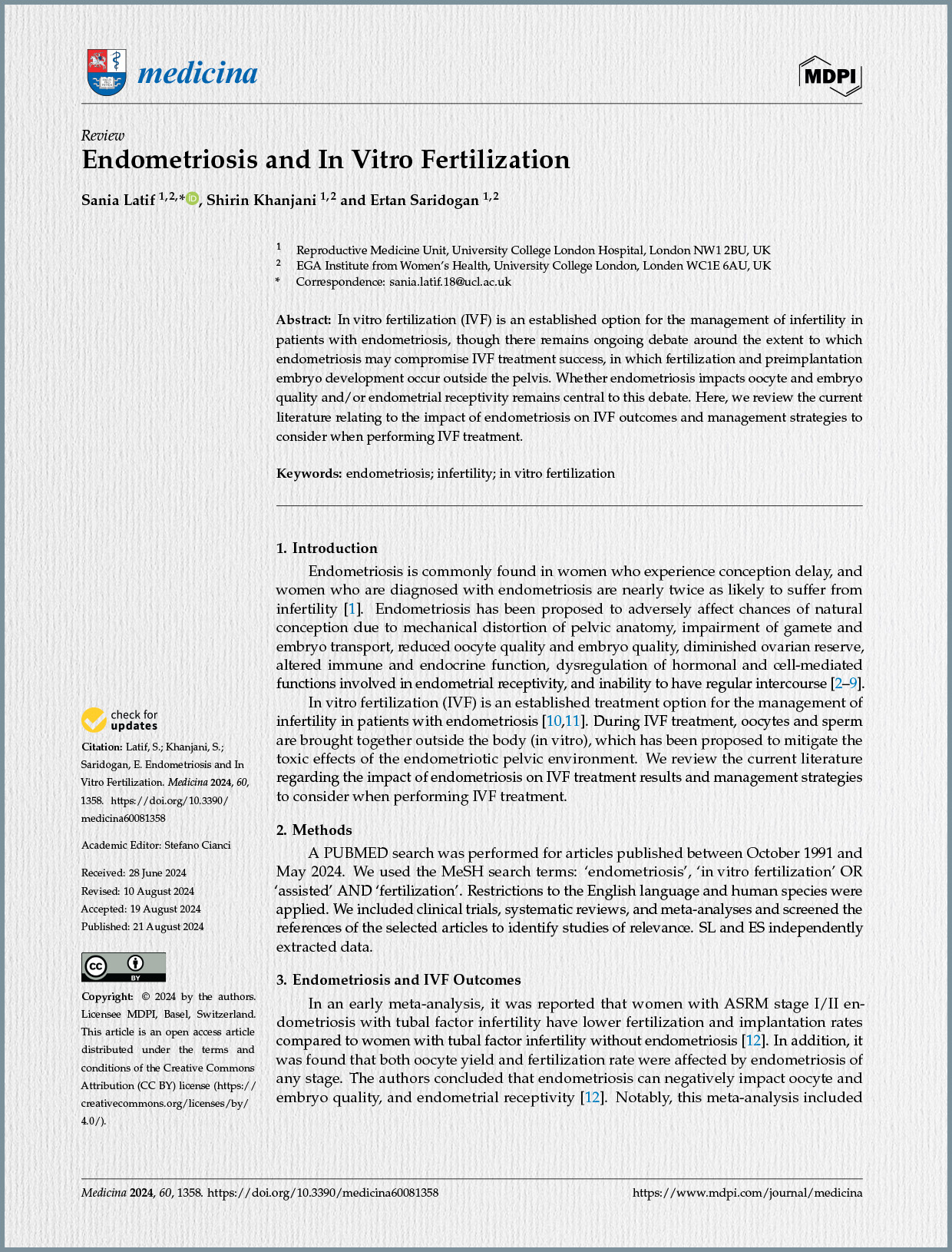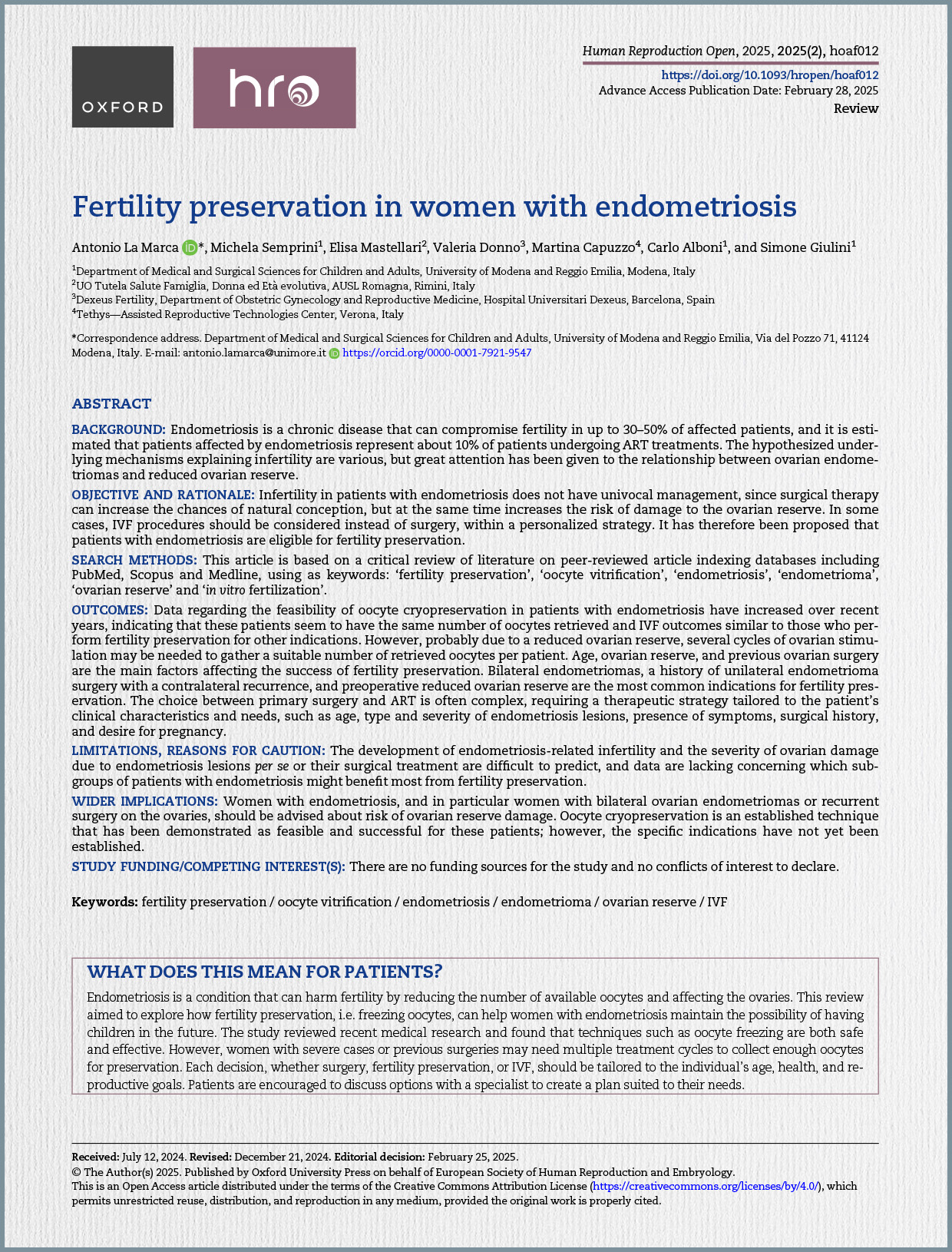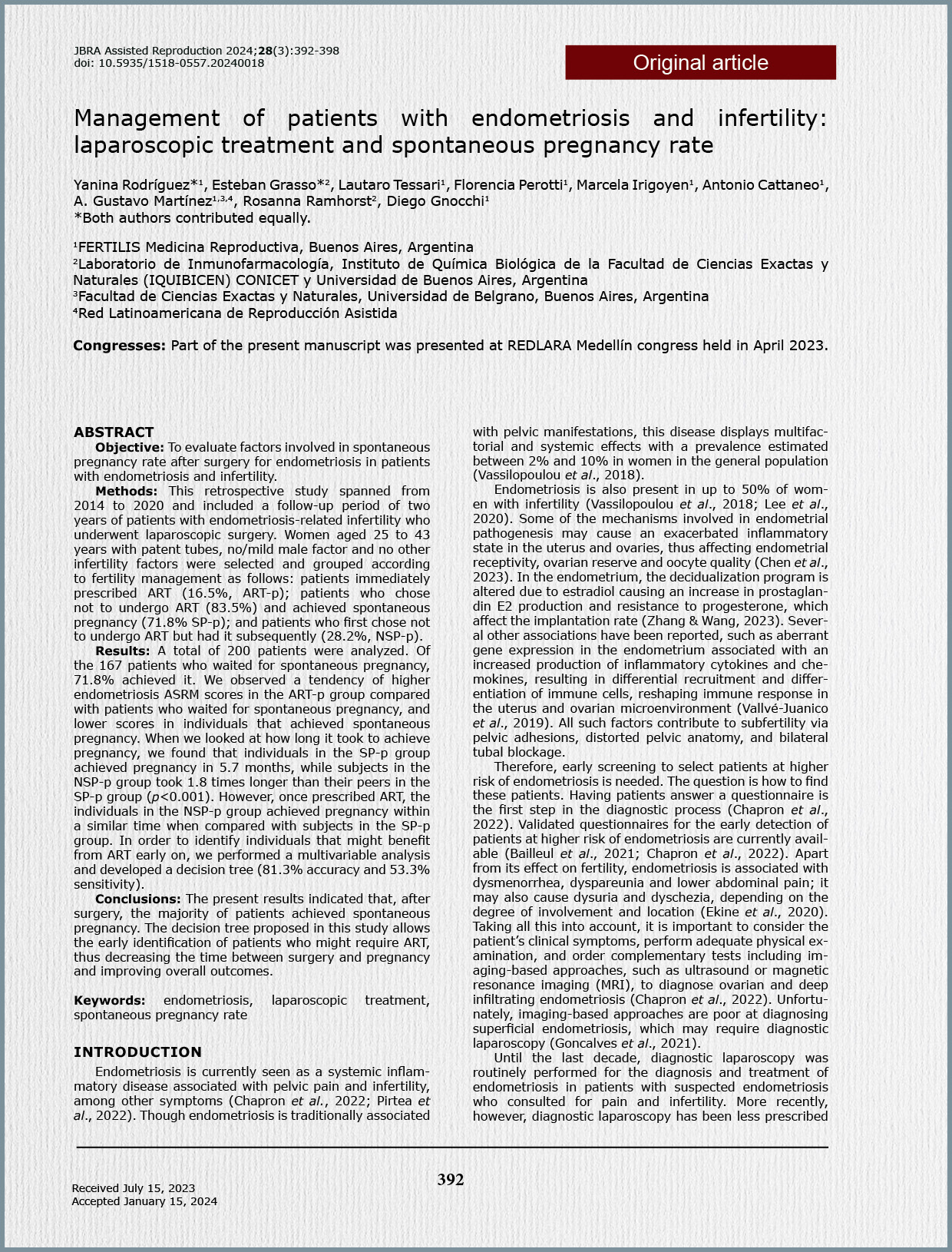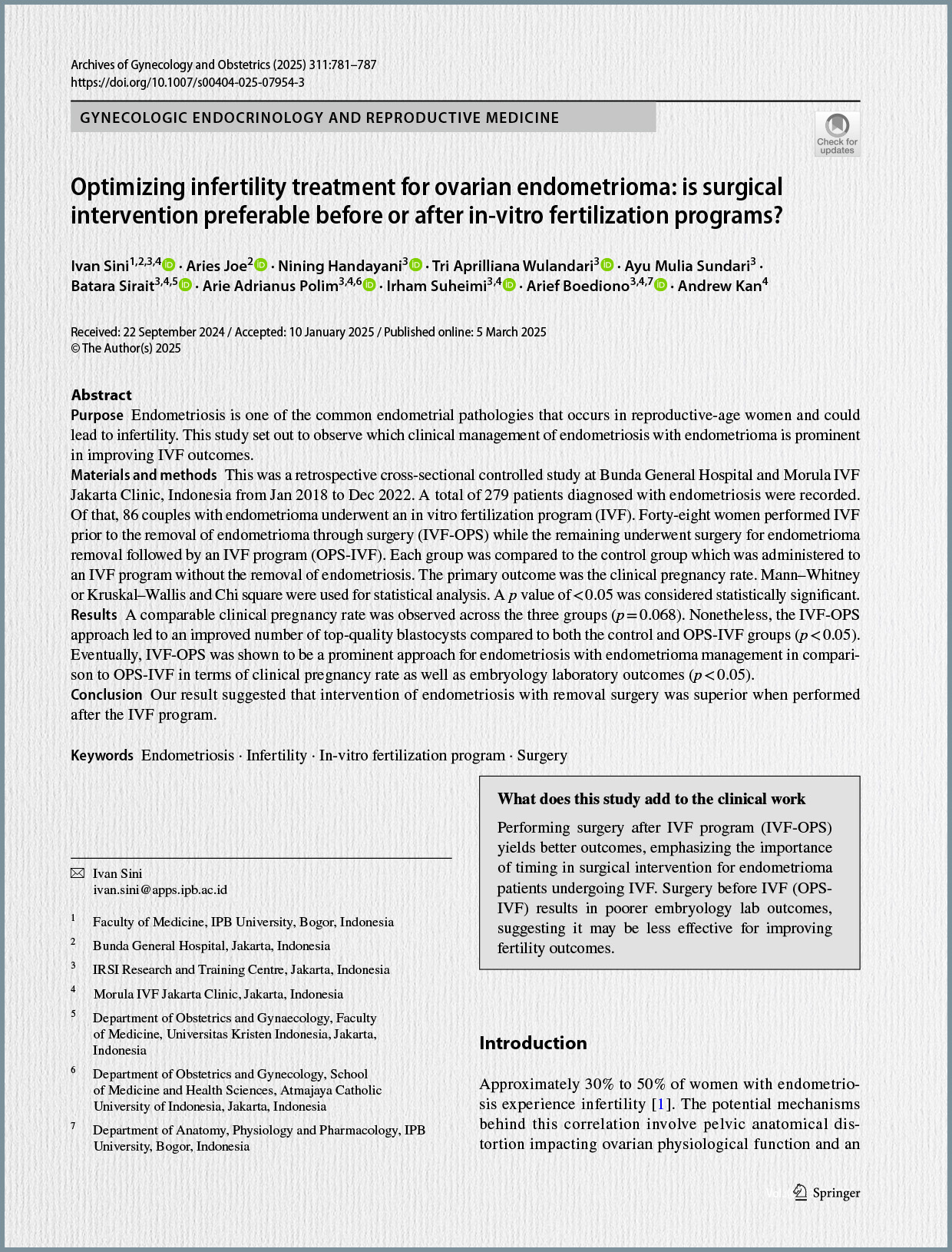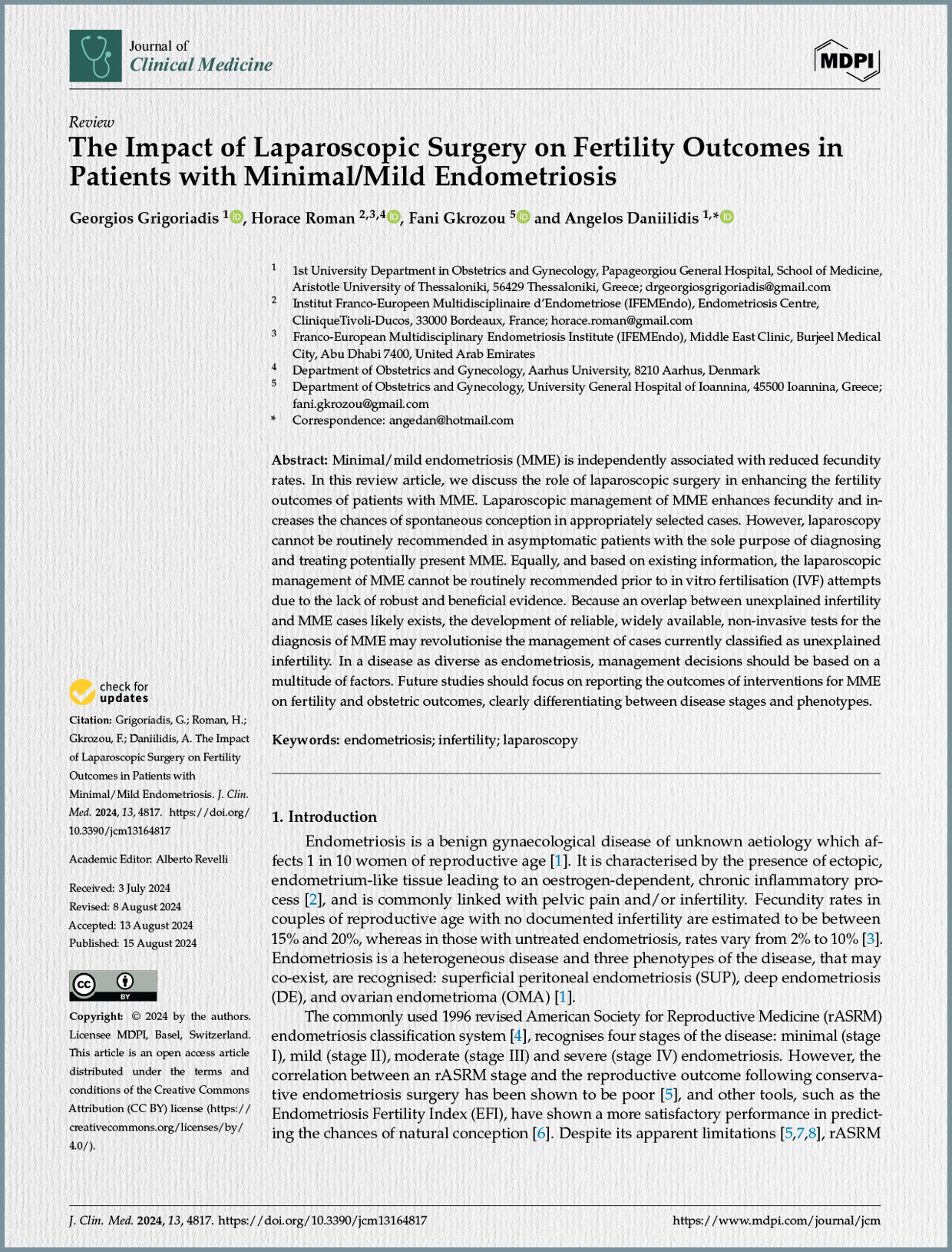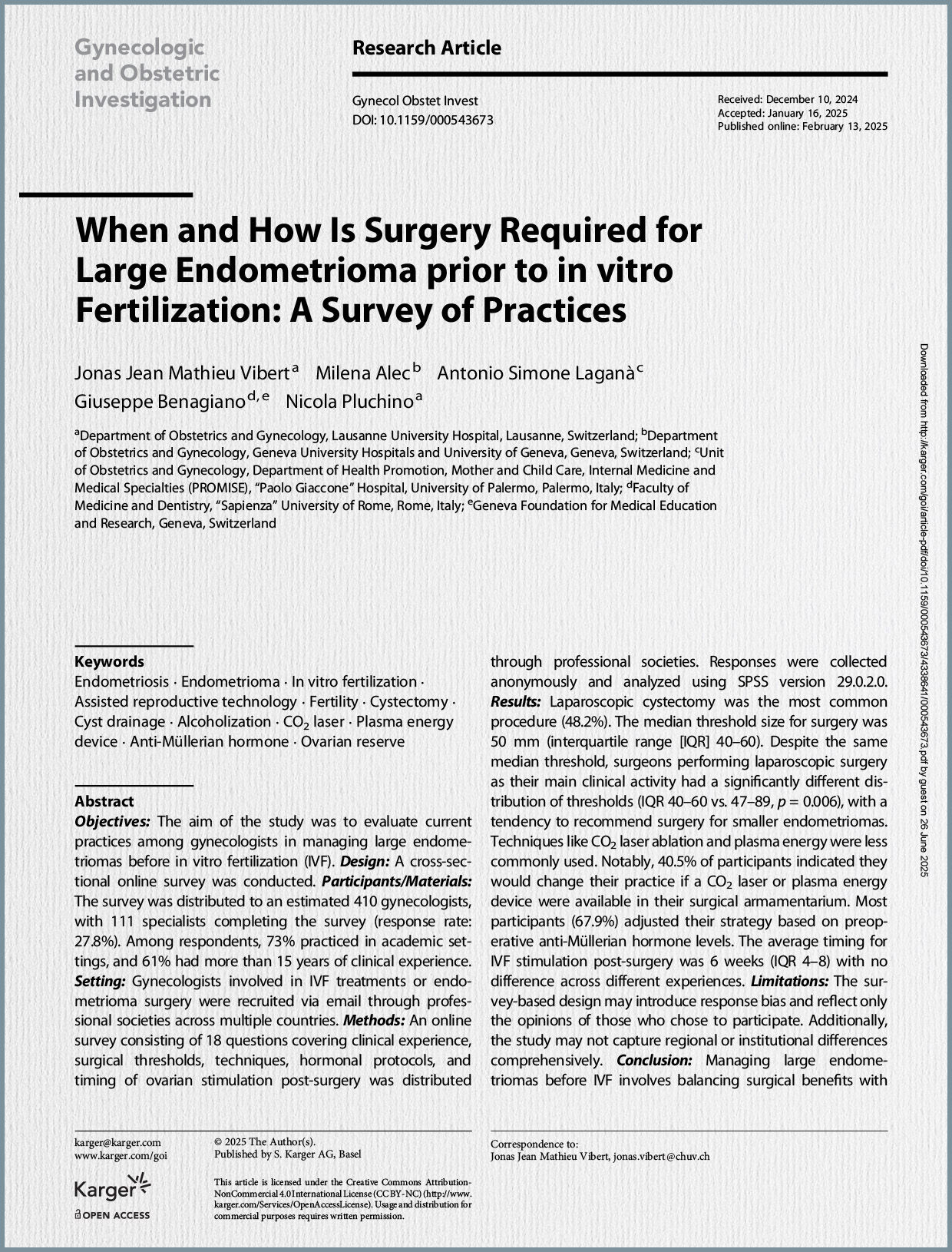Endometriosis is a complex, chronic inflammatory disease affecting approximately 5–10% of women of reproductive age and is a major cause of pelvic pain and infertility. It is estimated that 30–50% of patients with endometriosis experience infertility, and this condition accounts for about 10% of all patients undergoing Assisted Reproductive Technologies (ART) treatments.
The management of infertility in patients with endometriosis is not straightforward, as the optimal approach – whether surgical intervention or In Vitro Fertilization (IVF) – remains a subject of ongoing debate. This document synthesizes key information regarding endometriosis-related infertility, the role of surgery and ART, and the increasing importance of fertility preservation strategies.
Endometriosis and Its Impact on Fertility
Endometriosis is characterized by the presence of endometrial glands and stroma outside the uterine cavity. The mechanisms contributing to infertility in affected women are multifactorial:
- Ovarian Endometriomas (OMAs): Found in 17–44% of patients, OMAs contain fluid rich in free iron, reactive oxygen species (ROS), proteolytic enzymes, and inflammatory molecules. This toxic environment can lead to the replacement of normal ovarian cortical tissue with fibrous tissue, resulting in a reduction of the primordial follicle pool. Women with endometriomas often exhibit lower Anti-Müllerian Hormone (AMH) levels and a more rapid decline in ovarian reserve compared to age-matched controls.
- Pelvic Anatomical Distortion: Adhesion formation caused by endometriosis can distort pelvic anatomy, disrupting normal tubal function and impairing gamete and embryo transport.
- Chronic Inflammation: An exacerbated inflammatory state in the peritoneal fluid due to inflammatory mediators, cytokines, and growth factors can affect oocyte release, oocyte quality, and endometrial receptivity.
- Altered Endometrial Receptivity: The eutopic endometrium in women with endometriosis may exhibit progesterone resistance and aberrant cell signaling, which can impair embryo implantation.
- Dyspareunia: Chronic pelvic pain and dyspareunia can hinder regular intercourse, further complicating conception.
- Iatrogenic Damage from Surgery: Surgical interventions, particularly on the ovaries, carry the risk of inadvertently removing healthy ovarian tissue, leading to a diminished ovarian reserve.
While some studies suggest a reduced oocyte quality and altered embryo morphology in women with endometriosis, other meta-analyses indicate that embryo aneuploidy rates and subsequent pregnancy, live birth, and miscarriage rates are similar to those in patients undergoing IVF for other reasons, provided an adequate number of oocytes are retrieved.
Surgical Management of Endometriosis for Infertility
The role of surgery in improving fertility for endometriosis patients is highly debated.
- For Minimal/Mild Endometriosis (ASRM Stage I/II): Some randomized controlled trials suggest that excision or ablation of endometriotic lesions and lysis of adhesions during laparoscopy can increase natural pregnancy rates compared to diagnostic laparoscopy alone. Guidelines from various societies, including ASRM and ESHRE, support operative laparoscopy as an option to improve natural, ongoing pregnancy rates in these cases. However, the number needed to treat (NNT) to achieve an additional pregnancy is high (at least 12), and some studies show no significant benefit in terms of fecundity.
- For Deep Infiltrating Endometriosis (DIE): The efficacy of surgery for improving fertility in ASRM stage III/IV endometriosis is less clear. Some studies indicate that surgical treatment of DIE may improve pregnancy rates after IVF, while others report conflicting results, with some experts suggesting IVF as a first-line treatment for asymptomatic patients prioritizing fertility. Surgery for DIE is often considered when patients experience severe pain, bowel or urinary obstruction, or subocclusion.
- For Ovarian Endometriomas (OMAs): Surgical removal of OMAs can improve natural conception rates. The stripping technique is generally recommended due to lower recurrence risk and higher natural pregnancy probability compared to drainage/electrocoagulation. However, surgical excision of endometriomas significantly reduces ovarian reserve, with AMH levels dropping by 30-44% after unilateral and bilateral cystectomies, respectively. There’s a reported 2.4-13% risk of premature ovarian failure post-surgery.
Impact of Surgery on Ovarian Reserve and IVF Outcomes
Surgical interventions for endometriomas can damage ovarian parenchyma through several mechanisms, including the accidental removal of healthy ovarian tissue, vascular damage from electrocoagulation, and autoimmune responses triggered by inflammation. While laparoscopic cystectomy is common, techniques like CO2 laser ablation and plasma energy are considered more tissue-sparing, potentially minimizing ovarian damage.
Despite the potential for natural conception, solid evidence from multiple meta-analyses indicates that surgical treatment of endometriomas generally does not improve IVF outcomes in terms of live birth rates or clinical pregnancy rates. In fact, it may lead to a higher cycle cancellation rate due to poor ovarian response. The most recent ESHRE guidelines do not routinely recommend surgery prior to ART solely to enhance live birth rates.
Assisted Reproductive Technologies (ART) for Endometriosis-Related Infertility
ART, particularly IVF, is a well-established treatment for endometriosis-related infertility. It is often considered the first-line approach in cases of ovarian endometriomas to avoid potential surgical damage to ovarian reserve.
- Indications for ART: ART is generally preferred for asymptomatic infertile patients over 35 years old or those with decreased ovarian reserve, other associated infertility factors, bilateral endometriomas, endometrioma recurrence, a history of previous endometriosis surgery, or failure of natural conception after surgery.
- Ovarian Stimulation: Ovarian stimulation with GnRH agonists or antagonists can be performed safely in endometriosis patients, as it does not appear to increase the risk of disease progression or recurrence. While endometriosis patients may require higher doses of gonadotropins and may yield fewer oocytes, they can still achieve similar live birth rates compared to women without endometriosis if a sufficient number of high-quality embryos are obtained.
- Elective Embryo Freezing: Some evidence suggests that elective embryo freezing and deferred frozen embryo transfer may improve cumulative pregnancy and live birth rates by mitigating the adverse effects of high estradiol levels during ovarian stimulation on endometrial receptivity.
- Pelvic Infection Risk: While the overall risk is low, ovarian endometriomas may slightly increase the risk of pelvic infection and abscess formation after oocyte retrieval. Careful aseptic technique and antibiotics are recommended.
Fertility Preservation in Women with Endometriosis
Given the chronic nature of endometriosis and the potential for disease progression or surgical damage to ovarian reserve, fertility preservation (FP) strategies, particularly oocyte cryopreservation, have gained significant attention.
- Feasibility and Effectiveness: Oocyte cryopreservation has proven feasible and successful for endometriosis patients, with comparable IVF outcomes (e.g., live birth rates) to those undergoing FP for other indications, provided an optimal number of oocytes are retrieved.
- Key Factors for Success: Age and ovarian reserve are critical predictors of FP success. Younger patients and those with better ovarian reserve tend to have better outcomes.
- Multiple Cycles: Due to potentially reduced ovarian reserve in endometriosis patients, multiple ovarian stimulation cycles may be required to obtain an adequate number of oocytes (at least 10 MII oocytes) for cryopreservation.
- Surgical History Impact: Patients with a history of prior ovarian surgery for endometrioma tend to have fewer retrieved oocytes compared to those without previous surgery. However, the stage of endometriosis (I-IV) does not seem to significantly influence the number of cryopreserved oocytes.
- Indications for FP: While no universal guidelines exist, proposed indications for FP in endometriosis patients include: age over 35, bilateral endometriomas (before surgery), history or risk of multiple surgeries, reduced preoperative ovarian reserve, ovarian endometrioma combined with reduced ovarian reserve, previous unilateral endometrioma surgery with contralateral recurrence, severe endometriosis diagnosis, or large endometriomas (>4 cm).
- Preferred Method: Oocyte cryopreservation is considered the most suitable FP technique for post-pubertal endometriosis patients, as it does not require a male partner and has a low associated morbidity. Embryo cryopreservation requires a partner and raises ethical concerns. Ovarian tissue cryopreservation is not typically recommended for this benign condition, as it involves removing normal cortical tissue, but could be considered in very specific, severe cases.
Current Challenges and Future Directions
Despite increasing data, there is still a lack of international consensus and updated, evidence-based guidelines from scientific societies for managing endometriosis, particularly regarding the size threshold for surgery prior to IVF and specific indications for fertility preservation. This leads to significant variability in current practices, often influenced by individual practitioner expertise and training rather than solely by institutional setting.
There is a clear and strong need for future well-designed randomized controlled trials to compare surgical and medical treatment options, including the timing of interventions, to optimize fertility outcomes for women with endometriosis. Furthermore, the development of reliable, non-invasive diagnostic tools for endometriosis, such as salivary microRNA signatures, could revolutionize patient management by allowing earlier diagnosis and more tailored interventions. Ultimately, a personalized, multidisciplinary approach, carefully considering the patient’s symptoms, age, ovarian reserve, and reproductive goals, is essential to optimize outcomes.



